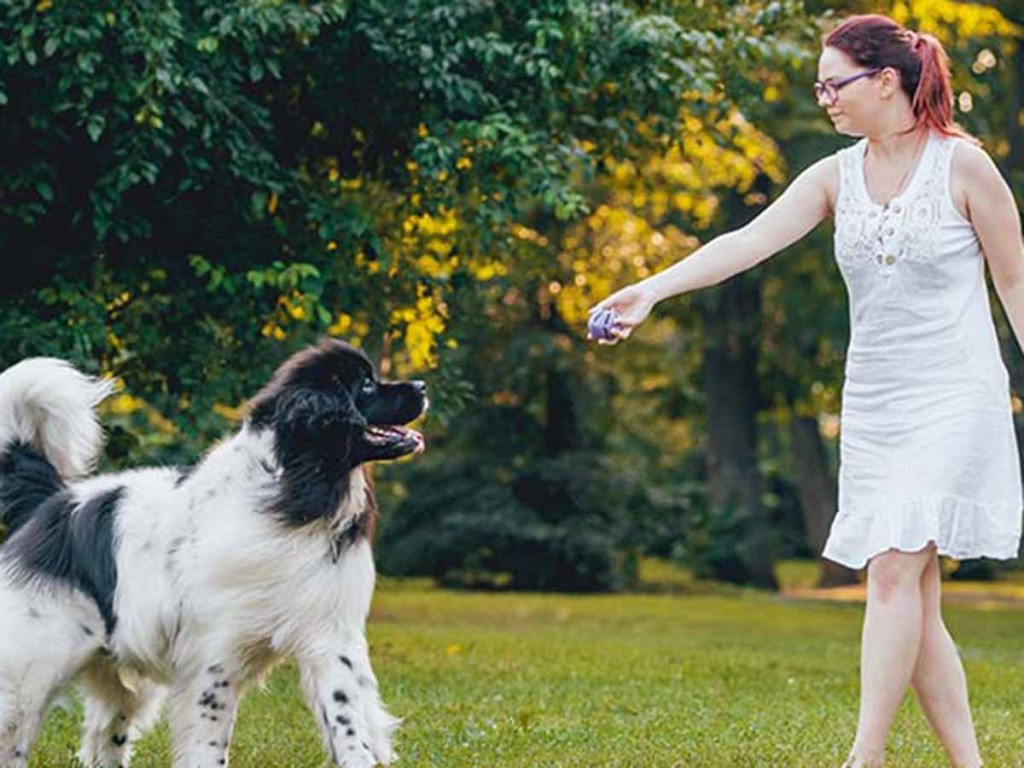
Tips on training your dog
Teach the basics of obedience to keep your dog well-mannered and out of harm’s way
It’s important your dog learns the basics of obedience. A dog that will respond to your commands is more likely to keep out of harm’s way.
Having a well-behaved dog helps to keep him safe. If you allow yours to walk off-leash, or he tends to bolt from the house when the door is opened, it’s imperative that he comes back when called. Keeping your dog away from a speeding car or an aggressive animal could save his life.
Dogs with good manners are also good neighbors. You don’t want to allow yours to show unbridled enthusiasm to a child who’s afraid of dogs, or an elderly neighbor unsteady on her feet.
When should you begin training? For a puppy less than three months old, you should start right away with very light training. Start with potty training and household ground rules, like where he sleeps, where he should stay during your mealtimes, which rooms he is allowed in, if he is permitted on the couch, and so on.
Once a dog is around three or four months old, he has a long enough attention span to start learning basic commands. While you can teach an old dog new tricks, “It’s always easier to teach a new command than break an old habit,” says Robin Ray, a dog trainer in Wellington, Florida. Training sends a message that you’re the leader of the pack. It’s also a wonderful way to bond.
Before you start, acquire the tools you’ll need. Your veterinarian can be a good resource to recommend a proper training collar and leash that takes your dog’s size and weight into consideration. You’ll also need a supply of small treats that you can stash in your pocket. Rare is the dog that isn’t motivated by something good to eat.
According to Ray, the basic commands that every dog should learn (in this order) are heel, sit, stay, and come.
Heel
With the dog at knee level on your left side and the leash in your hand, start walking with your left foot first as you give the “Heel” command, using the dog’s name. Dispense treats and positive reinforcement when he walks correctly. If he doesn’t get the hang of it right away, give the leash a gentle tug to bring him back into place and start again.
Sit
Simply hold a treat toward the back of his head as you say, “Sit” with the dog’s name. “Most dogs automatically sit,” says Ray. “If your dog doesn’t, lightly touch his butt as you issue the command. Then treat and praise.”
Stay
Start with your dog in the sit position. Standing in front of him, show an open-palm hand command as you say, “Stay,” and his name. Keep eye contact and leave him in the stay position for 30 seconds, then release him with the word, “Okay!” While you practice, have him stay for longer periods as you stand farther and farther away.
Come
Hook up a non-retractable leash at least six feet long to your dog in the “Sit” position. Pull gently as you say, “Come,” and the dog’s name in an excited, happy voice. When the dog comes and sits in front of you, shower him with praise and give him a treat.
More tips from the dog trainer
- To avoid confusing the dog, say the same short word and his name with each command every time.
- Keep training sessions brief. A dog’s attention span is short.
- For the basic commands, train 3-5 times a day, with each session lasting no longer than 10 or 15 minutes.
- Remember that your dog wants to please. He’ll respond to praise and shrink from punishment. Patience, practice, and heaps of love go a long way in turning an untrained pet into a loyal and responsive dog.
More like this
- Understanding cat aggression
 Find out why your cats are being aggressive and how to help them get along.
Find out why your cats are being aggressive and how to help them get along. - See the world through your dog’s eyes
 Get a dog’s-eye view by understanding how your dog sees differently than you
Get a dog’s-eye view by understanding how your dog sees differently than you - How to keep your pet entertained while you’re away
 Tips and tricks to keep your dog or cat from getting lonely – and mischievous – while you’re gone
Tips and tricks to keep your dog or cat from getting lonely – and mischievous – while you’re gone




